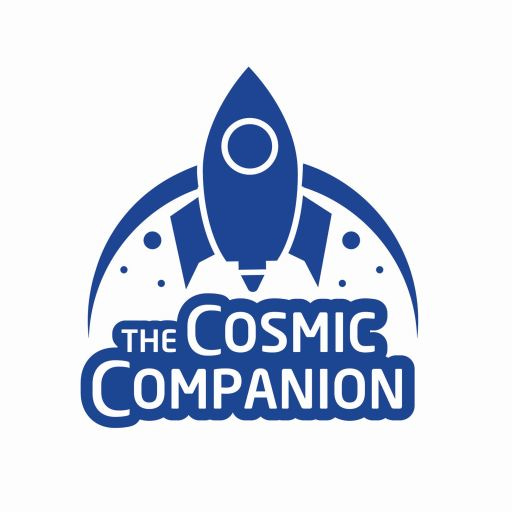Hello everyone!
This week on The Cosmic Companion, we will explore The Water Worlds of the Solar System, talking with Olivier Witasse from the European Space Agency, Project Scientist for the Jupiter Icy Moons Explorer, or Juice, now on its way to the Jovian system.
Join me, your trusty celestial tour guide, as we don our intellectual swim trunks and dive into the water worlds of our solar system.
Water, essential for all life on Earth, was once thought to be rare in the solar system.
Large quantities of water ice are now believed to sit inside deep craters at the poles of the Moon, where sunlight never strikes. Ice deposits at the South Pole of the Moon alone could hold more than 150 times as much water as the Mediterranean Sea.
These vast deposits of water mean these regions are where the first human settlements on the Moon will soon rise.
But native life seems unlikely inside huge blocks of solid ice billions of years old.
[<<< Shows what you know. I live in the coolest neighborhood in the solar system!]
Mars was, likely, once home to massive oceans. But now, water on this world is thought to be restricted to thimble-sized deposits buried a couple metres beneath its ruddy surface. Although microbial life might exist in these tiny abodes, you really can’t do much chemistry in a thimble.
[>>> What is wrong with this guy, seriously? I’ve raised over 674,000 children in this thimble, and they turned out just fine!]
Next up is the King of the Planets. Of the 80–95 known moons of Jupiter, three are now believed to house vast oceans of liquid water.
Callisto is the most heavily cratered object in our solar system. Once thought to be a dead body, evidence for subsurface oceans was spotted by the Galileo spacecraft in the 1990s. This same craft also found a thin atmosphere of carbon dioxide, similar to the one in Isaac Asimov’s story “The Callistan Menace.” Unlike that story however, giant caterpillars were nowhere to be seen.
[___ Dude! I’m right here! Hello! Giant caterpillar!]] {SCRATCH HEAD}
Ganymede is larger than the planet Mercury, and it is the only moon known to have its own magnetic field. This behemoth world could also be home to the largest ocean in our family of planets.
Bodies of water on Ganymede may stretch 10 times deeper than Earth, buried under 150 kilometers of ice. That’s five times deeper than the average crust of Earth here on Terra Firma. These massive oceans might also be sandwiched between layers of mineral-rich rock, greatly increasing the amount of chemistry happening at the boundaries between water and rock, where life on Earth first took hold.
[[VENDOR: Get your Europa sandwich right heah! We got rocks, we got watah! We got little green stuff squirmin’ around dere. And slime! Extra slime! Also, pickles!
CUSTOMER: Ewww… Gross! Disgusting! No thanks! Who eats a sandwich with pickles?]]
Europa, with an iron core, rocky mantle, and an ocean of salty water… Sound familiar??? [->] …may be the best place in the solar system to search for extraterrestrial life. Oceans here could hold twice as much water as is found on Earth.
The surface of this world is covered in water ice, bent and pulled by tidal forces due to gravity from Jupiter. This action breaks the icy surface, and it cracks apart from stress, like every couple by the end of a Paul Simon song.
Heat from this process might also help warm the oceans of Europa, increasing hope of extraterrestrial life forming on this distant world.
On 14 April, the Jupiter Icy Moons Explorer spacecraft, lovingly known as Juice, lifted off on its way to explore these intriguing moons of Jupiter.
Next up, we talk with Olivier Witasse from the European Space Agency, Project Scientist for Juice.
—
Next up, we head on out to the Ringed Planet.
After staring at Saturn’s rings, mouth agape for 22 minutes like James Kirk first seeing the Enterprise in Star Trek: The Motion Picture, we turn our sights to two intriguing worlds — Titan and Enceladus.
Titan is best-known for having massive oceans of methane and ethane. However, beneath its crust might also lie oceans of liquid water. With hydrocarbons, organic materials, mineral-rich rocks, and water, Titan could be the home of some intriguing chemistry, and perhaps even bizzare forms of life.
Enceladus may be small, but it is the Old Faithful of the solar system, spewing forth geysers of water thousands of kilometers into space. These plumes, recently imaged by the James Webb Space Telescope, are infused with the chemical building blocks of life.
Whipping around Saturn once every 33 hours, these eruptions from Enceladus form a giant donut of water encircling the planet. Mmm… Giant Water doughnut…
Oh! You like geysers, you say! Well, I happen to know where to find some more. What? No, not Yellowstone. well, kinda. But… You know what? Just follow me.
OK — Here we are at the most distant full-fledged planet in the solar system (we think!), Neptune. See its largest moon? Yeah, that troublemaker orbiting in the opposite direction from all the other satellites here. That’s Triton.
Now, it’s wet and cold on Triton, -235 Celsius on average, pretty much the exact opposite of Arizona.
[At least it’s a wet cold!]
MMmm…
The surface of Triton is covered in active geysers pushing nitrogen gas into space. This world is home to smooth volcanic plains and pits formed by flows of icy lava — a process known as cryovolcanism. Volcanoes of mineral-rich water on Triton turn the landscape into a cross between Ancient Pompeii and Frozen.
Finally, we zoom out to the Kuiper Belt, paying a visit to the dwarf planet with a heart, Pluto!
Beneath its rocky crust, Pluto is now thought to house a global ocean, which may be 100 kilometers — or more than 11 Mount Everests — deep. Despite the frigid temperatures this far from the Sun, stress from tidal forces between Pluto and its largest moon, Charon, could keep these oceans warm enough to remain liquid, and perhaps even provide enough energy to spark life.
Each of these water worlds provides intriguing landscapes, along with geology, chemistry, and physics which could offer us the greatest finding of all time — the discovery of life on other worlds.
Next week on The Cosmic Companion, we take a look at efforts at Coding the Universe. How do we recreate the Universe in computer simulations, and how will artificial intelligence revolutionize our understanding of the Cosmos? We will be joined by cosmologist Andrew Pontzen, author of The Universe in a Box. Make sure to join us, starting on 10 June.
Head on over to TheCosmicCompanion.com to sign up for our newsletter, and never miss an episode.
If you love your science shows informative, entertaining, and at least occasionally funny, where can I find a show like that? It sounds great! Oh, oh… The Cosmic Companion, right. Share and follow us, and let your friends know about the show. Thanks!
Clear skies!
[[It’s… cold…
Awww… Jump on in. The water’s fine once you get used to it.]]
James
























Water Worlds of Our Solar System with Olivier Witasse, Jupiter Icy Moons Explorer